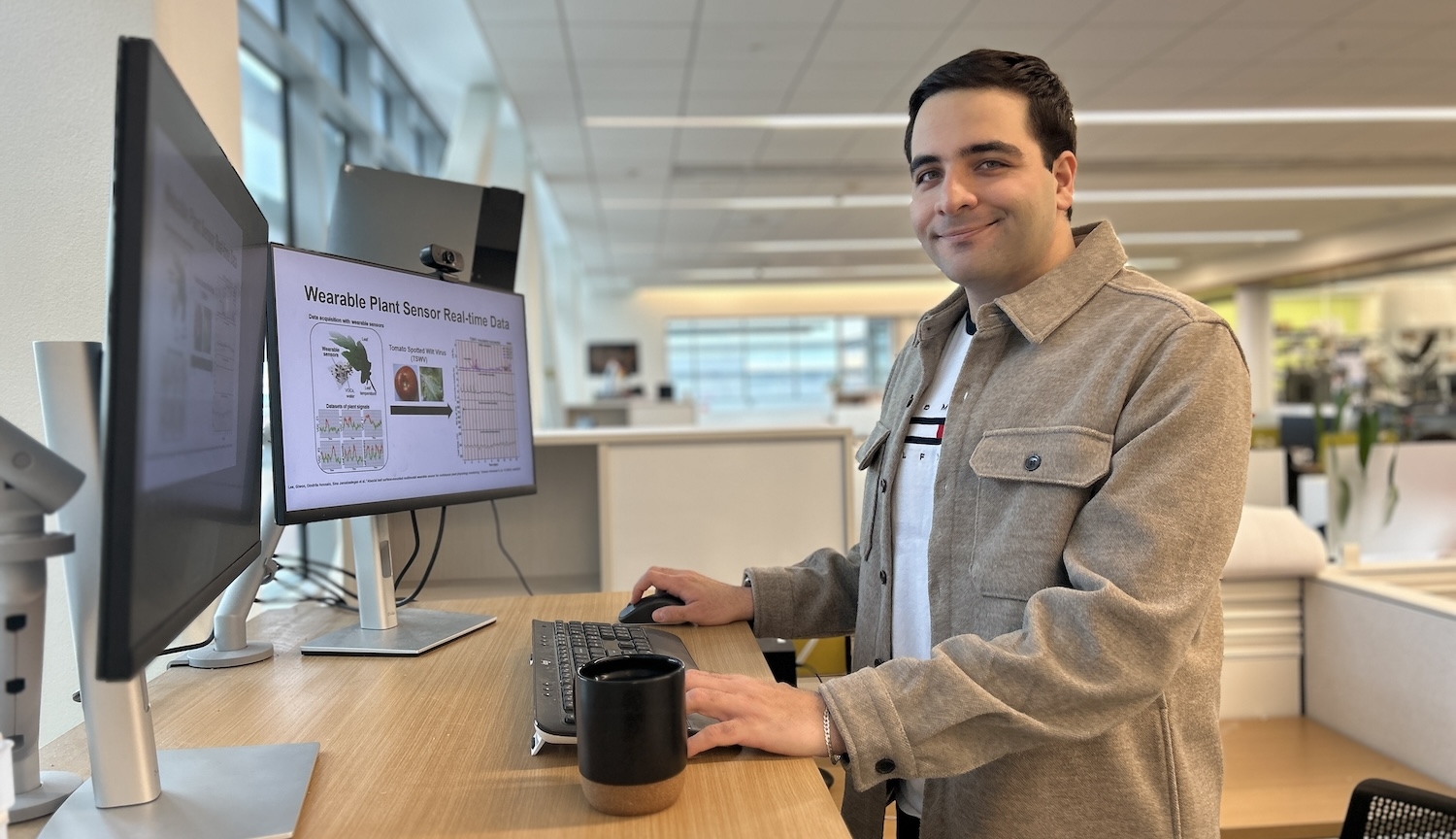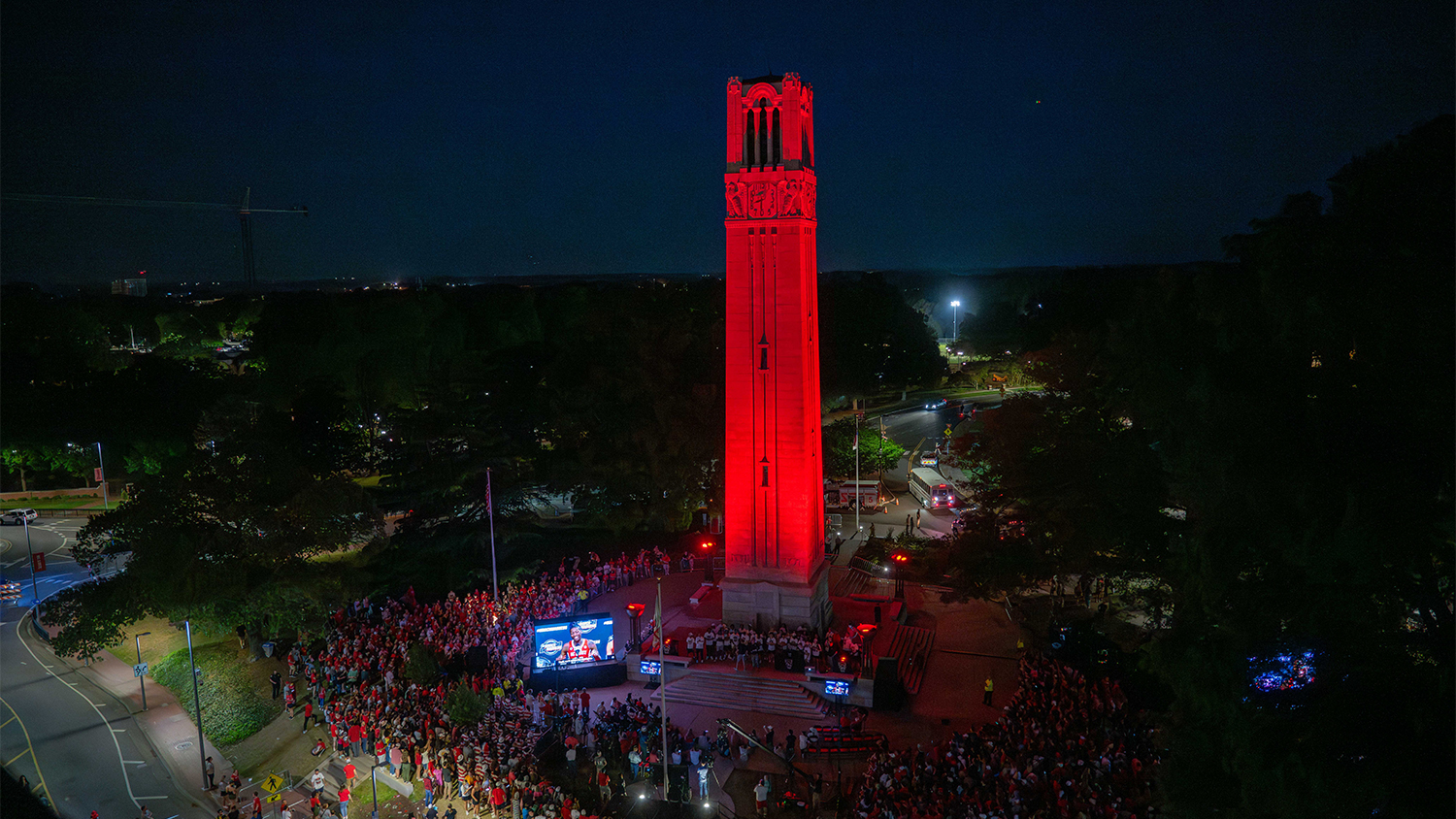Life changers

An eight-hour bus ride and half a day’s wages. That’s the sacrifice a Guatemalan man named Fernando makes every month to get treatment for a leg injury he suffered in a motorcycle accident last year.
NC State biomedical engineering student Eyob Eyualem wants to change that.
After learning that few options exist for physical rehabilitation in El Remate, a small village in northern Guatemala, Eyualem and his senior design team chose to help. They designed a stationary bicycle with special wooden footplates that can be crafted by local carvers to give injured riders more stability as they pedal.

The device is lower-limb-focused because serious leg injuries from motorcycle accidents are so common in Guatemala.
“Traveling to Guatemala was a key part of the success of our project,” Eyualem said. “We learned how valuable every little thing can be to the Guatemalans.”
The device created by Eyualem and his team was one of the many projects biomedical engineering students develop during their senior years. The projects, which help prepare students for graduate school or industry, immerse students in a clinical environment, such as a hospital or a small village, to look for medical problems that need solving. Students are tasked to find at least 30, but some identify more than 100.
After selecting a problem, each team works toward a solution by designing a product and then modeling a way to produce and distribute it. They develop their projects under standards that mimic the Food and Drug Administration’s quality guidelines under which students will work when they enter industry or graduate school.
At the end of the project, what were once abstract concepts become devices that can help people. This represents a steep learning curve for students, who must quickly solve a problem they didn’t know existed a few months earlier.
“They have to take the body of knowledge they learned, and in addition to that, teach themselves new skills to realize the solutions,” said Dr. Andrew DiMeo, instructor for the senior design projects.
Although most students stay local to complete their projects, three students from this year’s senior design class traveled to Ethiopia and another three went to Guatemala. Funding and organizing the trips were difficult, but grants and generous donations from family members, friends, doctors and mentors made them possible. The students also received support from the NC State Center for Student Leadership, Ethics & Public Service and the Alternative Service Break program.
The students’ work is particularly welcome in Guatemala, where people who have suffered serious leg injuries often have to stay home for up to six months because they do not have the necessary equipment – such as wheelchairs and walkers – to leave the house. Residents like Fernando who seek out treatment must travel eight hours to the nearest hospital in Guatemala City. The bus fare is $3 – about half of a day’s wages for many residents.
Leg injuries are particularly devastating for Guatemalan men, generally the top wage-earners in their families, because their jobs typically require a substantial amount of physical labor.
“If the men cannot work, the whole family suffers,” Eyualem said.
The device created by Eyualem and his team would help patients recover and return to work more quickly, benefits that can help families survive the economically troubled region. Working off this design, another NC State team designed a secondary attachment for the bicycle that allows patients to create energy while pedaling and thus perform productive work for their families while rehabilitating. The attachment can be anything from a food-producing corn grinder to a heat-relieving fan.
Eyualem’s team is currently discussing a production and distribution plan with the Guatemalan company Maya Pedal. The group plans to send the company instructions on creating the device, and one of the team members is traveling back to El Remate this summer to help local residents build the device should Maya Pedal choose to produce it.
Injured people like Fernando are not the only ones who could benefit from the students’ work. Research conducted by Andrew Miller’s team found a lack of oxygen supply equipment in many hospitals in developing nations. For example, 75 percent of major hospitals in Tanzania suffered from inadequate supplies of oxygen for most of the year. In South Africa, 80 percent of kids with pneumonia aren’t getting enough oxygen for the therapy they need.
So Miller and his team traveled to Africa to plan out a portable, affordable oxygen delivery system. Their larger goal was to boost available oxygen supplies at developing world hospitals by 40 percent.
“We began our journey with one goal in mind: to change lives,” Miller said.
When they arrived at a local hospital in Addis Ababa, Ethiopia, doctors explained that oxygen equipment was in such short supply that they had to turn away many patients. To combat this problem, Miller’s team applied the principles of pressure swing adsorption concentrator technology, a technique that removes nitrogen from the air to concentrate oxygen levels.
Miller’s ideal product would supply oxygen at a rate of 10 liters per minute to one patient or five liters per minute to two patients, numbers that compare favorably with equipment used in more developed areas.
Designing equipment for a global market is completely different than creating products for domestic consumers, Miller said. The team learned that great designs must account for not only the technical challenges, but also incorporate social, economic and cultural influences. Visiting Ethiopia offered the opportunity to gain insight into the country’s culture and the daily lives of its residents — as well as their severely limited resources.
Ideally, the team’s devices would be produced by east African residents using locally available materials. Through this process, each unit would cost a hospital as little as $500 — far below the more than $5,300 annual cost for refilling oxygen tanks without a concentrator like the one Miller’s team developed.
And producing the devices locally helps create businesses and jobs that improve the area’s economy.
“While in Ethiopia, we were not designing an oxygen concentrator for hospitals,” Miller said. “We were designing for something much more significant: people’s lives.”
- Categories:


